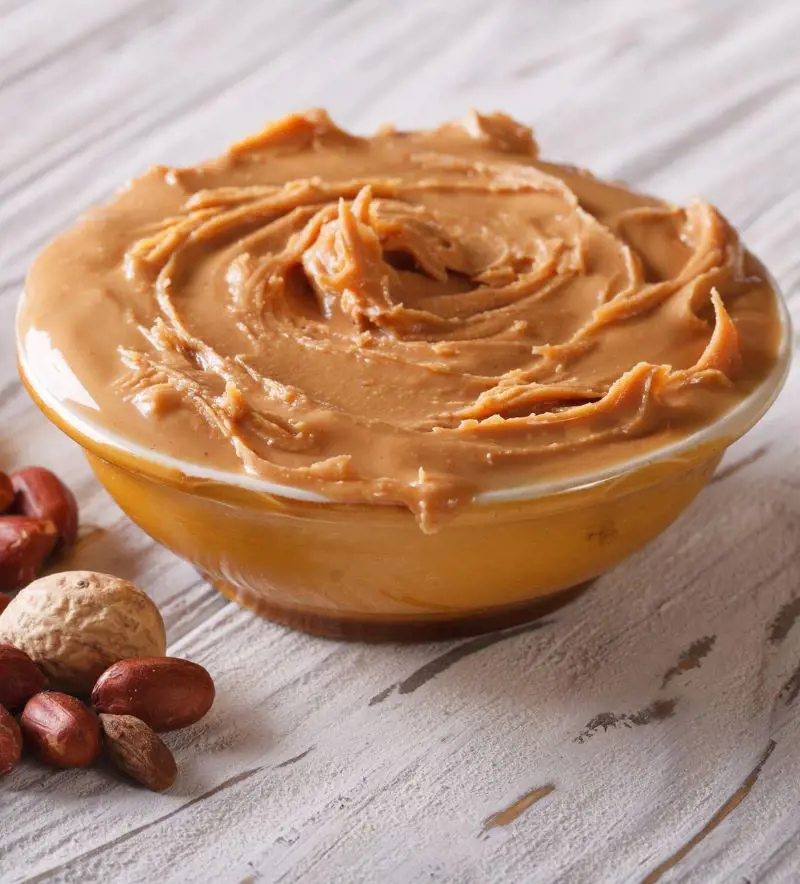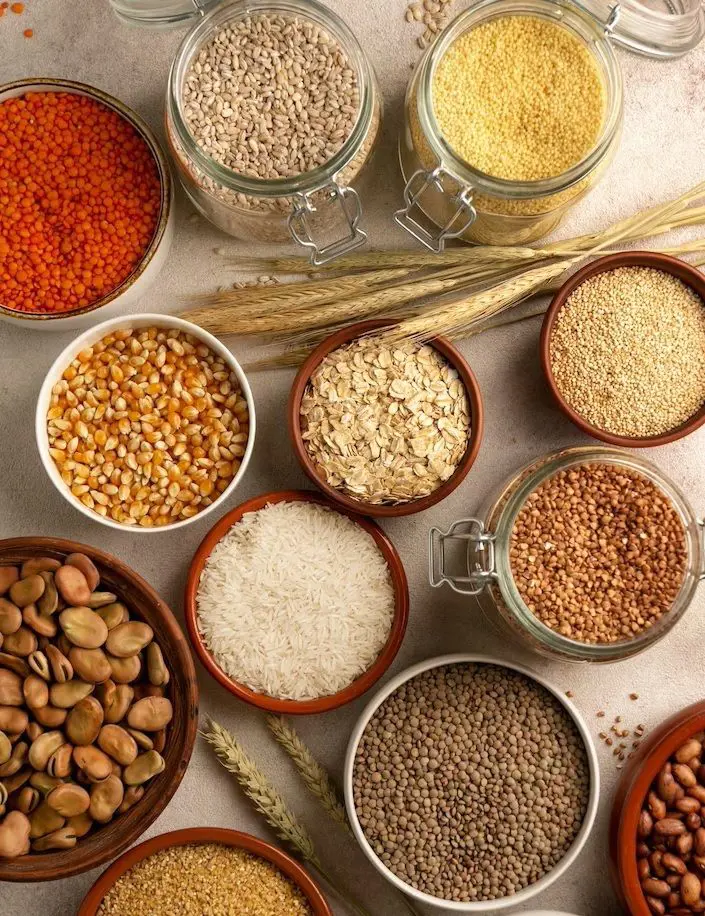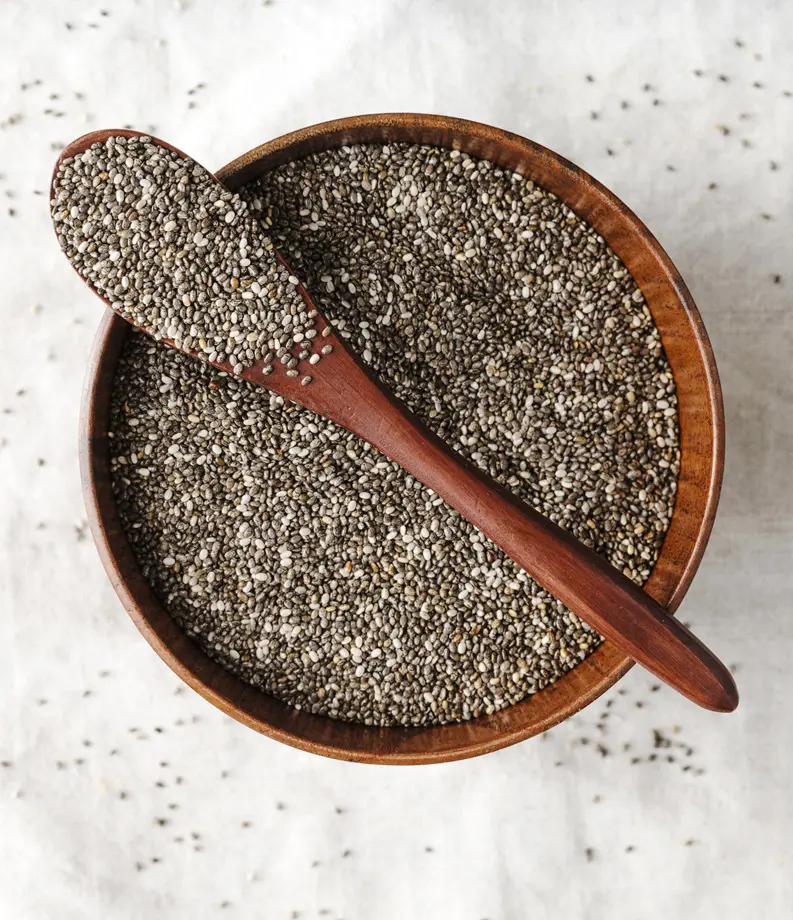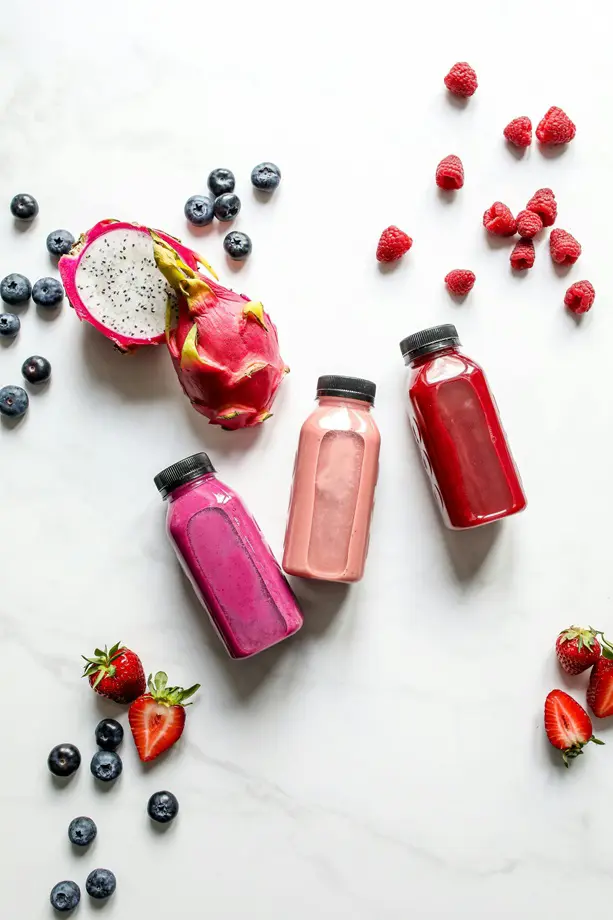20 Magnesium Rich Foods And Its Health Benefits

This post may contain affiliate links. If you make a purchase through links on our site, we may earn a commission.
Magnesium is found in a wide range of nutrient-rich foods, including nuts, seeds, legumes, some fatty fish, and several fruits and vegetables. This vital mineral is involved in more than 300 chemical reactions within your body and aids in maintaining good health.
It plays a crucial role in regulating heart rhythm, controlling blood pressure, facilitating muscle contractions, maintaining bone health, and supporting energy production. However, a substantial number of individuals fail to meet its recommended Daily Value (DV) of 400-420 milligrams (mg).
Here, we've compiled a list of 20 nutritious foods rich in magnesium to assist you in meeting your daily requirements.
1. Artichokes

- Serving size: 128 grams (1 medium-sized raw artichoke)
- Zinc content: 76.8 mg (19% of the DV)
Besides magnesium, artichoke is also an abundant source of folate (20% or more of the DV) and is a moderate source of vitamin K, sodium, fiber, and phosphorus. The food is super rich in antioxidants, which is associated with improved skin health.
Moreover, artichoke possesses properties that can help avert various cardiovascular diseases. You can incorporate this filling, nutrient-dense vegetable with other veggies and seeds containing a good amount of magnesium to ensure that you meet your daily requirements.
2. Avocado

- Serving size: 150 grams (1 cup of cubed avocado)
- Magnesium content: 43.5 mg (11% of the DV)
Avocado is a nutritious and delicious source of magnesium. The fruit is also rich in potassium, B vitamins, and vitamin K. Unlike most other fruits, avocados are high in fat, particularly monounsaturated fat, which can help lower your LDL (bad) cholesterol levels.
Furthermore, avocados are an excellent source of fiber, with the majority of the carbohydrates in the fruit coming from fiber, making them exceptionally low in easily digestible carbs. Studies have shown that incorporating avocados into your diet can lead to improved cholesterol levels, increased satiety, and reduced inflammation.
3. Banana

- Serving size: 118 grams (1 medium-sized banana)
- Magnesium content: 31.9 mg (8% of the DV)
Bananas are not only celebrated for their potassium content but also for their elevated levels of magnesium and fiber. Consistently incorporating this nutritious fruit into your diet can help prevent gastrointestinal issues in children and promote regular bowel movements.
The fruit also contains other compounds such as phytosterols, carotenoids, and phenolics that provide a spectrum of health benefits. These vital compounds function as antioxidants, helping to reduce inflammation and lower the risk of certain chronic diseases, including heart disease.
4. Chicken Breast

- Serving size: 100 grams (cooked, roasted)
- Magnesium content: 29 mg (7% of the DV)
Chicken breast is one of the most popular cuts of chicken. Its high protein and low fat content make it an excellent choice for people trying to lose weight. It also contains various B vitamins, especially niacin and vitamin B6, as well as minerals such as potassium, sodium, phosphorus, selenium, and magnesium.
The nutrients found in chicken breast can help support bone health, appetite control, muscle mass, and even mood and sleep. From being a valuable addition to a heart-healthy diet to offering surprising benefits for brain health, chicken breast can unquestionably be a part of a balanced and nutritious diet.
5. Cloves

- Serving size: 6.5 grams (1 tablespoon)
- Magnesium content: 16.8 mg (4% of the DV)
These aromatic flower buds are not only rich in magnesium but also packed with antioxidants that have been linked with reduced memory issues caused by oxidative stress. In addition to their culinary applications, cloves have a history of diverse medicinal uses. There is evidence supporting the efficacy of clove oil in alleviating toothache pain and various other types of discomfort.
The best way to consume cloves is in their natural, raw form. You can incorporate them into your daily routine by chewing on 2 to 3 cloves, or by adding them to your rice dishes. Cloves are frequently used to give aromatic and flavorful qualities to hot beverages, often combined with ingredients like lemon and sugar.
6. Dark Chocolate

- Serving size: 28.35 grams (1-ounce dark chocolate, 70-85% cacao solids)
- Magnesium content: 64.6 mg (15% of the DV)
Dark chocolate is not only a delectable treat but also a nutritional powerhouse, rich in magnesium, copper, iron, and manganese, while also boasting prebiotic fiber that carries the potential to feed the beneficial bacteria in the gut.
Furthermore, dark chocolate offers a remarkable advantage in promoting heart health, thanks to its rich content of flavanols, a powerful antioxidant component. Flavonoids possess a multitude of medicinal benefits, including anticancer, anti-inflammatory, antioxidant, and antiviral properties.
7. Legumes

Legumes are a nutritional powerhouse on multiple levels, including magnesium content. Here are some to consider:
- 'Black-eyed peas (cooked): 172 grams - 91.1 mg (23% of the DV)
- Kidney beans (cooked): 177 grams - 74.3 mg (19% of the DV)
- Soybeans (cooked): 180 grams - 108 mg (27% of the DV)
- 'Black beans (boiled): 172 grams - 120 mg (30% of the DV)
- Lima beans (cooked): 100 grams - 43 mg (11% of the DV)
- Edamame (frozen, prepared): 100 grams - 64 mg (16% of the DV)
Legumes are a rich source of nutrients. They are low in calories, yet their fiber and protein content make you feel full. Incorporating legumes into your diet can further help maintain blood sugar and blood pressure levels.
8. Molasses

- Serving size: 20 grams (1 tablespoon)
- Magnesium content: 48.4 mg (12% of the DV)
Molasses is a sticky substance resulting from refining sugar beets or sugarcane into sugar. Sugarcane molasses is often employed to sweeten and flavor foods. It serves as a rich source of vitamin B6 and several dietary minerals, including iron, potassium, calcium, manganese, and magnesium.
Adequate consumption of molasses may aid in alleviating constipation, treating anemia, and promoting hair and bone health. It provides a higher quantity of vitamins and minerals compared to other sweeteners but is also high in sugar. Therefore, molasses can have adverse effects if not consumed in moderation.
9. Okra

- Serving size: 80 grams (0.5 cup slices of okra, cooked, boiled, drained, without salt)
- Magnesium content: 28.8 mg (7% of the DV)
Apart from magnesium, Okra contains an assortment of nutrients that include zinc, folate, phosphorus, and iron. The oil from okra seeds boasts unsaturated fatty acids. It also has both essential and nonessential amino acids, thereby playing a crucial role in the human diet.
In addition, Okra stands as an abundant source of vitamin A and vitamin C, as well as antioxidants that help lower the risk of serious health conditions such as diabetes, stroke, heart disease, and cancer. It may also help support healthy pregnancy and promote balanced blood sugar levels.
10. Peanut Butter

- Serving size: 16 grams (1 tablespoon)
- Magnesium content: 27 mg (7% of the DV)
Alongside magnesium, peanut butter boasts significant levels of other essential dietary minerals including phosphorus, copper, zinc, and sodium. Each serving is packed with dietary fiber, vitamin E, folate, niacin, pantothenic acid, vitamin B6, and a combination of saturated and monounsaturated fats.
Moderate consumption of peanut butter as part of an overall healthful diet may aid in weight loss, boost heart health, support bodybuilding, manage blood sugar levels, and reduce the risk of breast disease. Nonetheless, exceeding the recommended quantity of peanut butter can lead to certain nutritional drawbacks.
11. Potato

- Serving size: 100 grams (baked with skin)
- Magnesium content: 30 mg (8% of the DV)
A starchy root vegetable, potatoes stand as a staple food in many countries. They are a rich source of potassium, vitamin C, magnesium, fiber, calcium, phosphorus, and sodium. When prepared in the right way, baked or boiled instead of deep-fried, potatoes are low in fat and calories.
They contain antioxidants and provide essential vitamins and minerals to your body. Moderate consumption of these naturally gluten-free vegetables may contribute to improved blood sugar levels and digestive health.
12. Raisins

- Serving size: 100 grams
- Magnesium content: 36 mg (9 % of the DV)
Consider combining these dried grapes with pumpkin seeds and cashews to prepare a heart-healthy, nutritious, magnesium-packed trail mix. Raisins supply 299 kilocalories and moderate amounts of several dietary minerals, vitamin B6, and riboflavin.
Plant-based compounds, such as phytonutrients, found in raisins have been shown to minimize the risk of chronic conditions like cancer, osteoporosis, and diabetes. Research also suggests that these natural compounds may have anti-inflammatory, brain-protective, and pain-relief properties.
13. Seeds and Nuts

Seeds and nuts may be tiny in size, but they boast a nutritional punch with gobs of fiber, healthy fats, protein, and minerals, including magnesium. Here are some options with their impressive magnesium resumes:
- Brazil nuts: 28.4 grams - 107 mg (26% of the DV)
- Cashews: 28.4 grams - 81.8 mg (20% of the DV)
- Almonds: 28.4 grams - 76 mg (19% of the DV)
- Walnuts: 28.4 grams - 44.2 mg (11% of the DV)
- Pecans: 28.4 grams - 33.9 mg (8% of the DV)
- Sesame seeds: 28.4 grams - 99.7 mg (25% of the DV)
- Pumpkin seeds: 28.4 grams - 73.4 mg (18% of the DV)
- Sunflower seeds: 28.4 grams - 36.1 mg (9% of the DV)
- Quinoa seeds (cooked): 185 grams - 118 mg (30.1% of the DV)
Moderate consumption of nuts and seeds may assist in weight management, as their fats are not fully absorbed, and they help regulate food intake. Additionally, they contain unsaturated fats and other nutrients that offer protective effects against heart disease and diabetes.
14. Some fatty fish

Fish, especially fatty varieties, are exceptionally nutritious. Numerous types of fish, including salmon, halibut, and mackerel, are rich sources of magnesium. Below, we have provided their magnesium content profiles.
- Salmon (cooked): 154 grams - 57 mg (14% of the DV)
- Halibut (cooked):159 grams - 170 mg (43% of the DV)
Salmon also provides a diverse range of other crucial nutrients, such as omega-3 fatty acids, which offer various health benefits. Furthermore, in addition to magnesium, halibut serves as a valuable source of selenium, containing compounds known as selenoproteins that play a role in reproduction and thyroid hormone metabolism.
15. Spinach

- Serving size: 30 grams (1 cup raw spinach)
- Magnesium content: 23.7 mg (6% of the DV)
Besides magnesium, spinach also provides several power-packed water-soluble antioxidants that possess great potential for human health. This green leafy vegetable offers essential nutrients like fiber, iron, protein, and calcium and supports healthy digestion.
Calcium and vitamin K found in spinach are crucial for promoting healthy bone development in kids. Consider blending this leafy veggie into smoothies or mixing it into pancakes, muffins, and flavorful egg dishes for a healthy and delectable treat.
16. Swiss Chard

- Serving size: 36 grams (1 cup, raw)
- Magnesium content: 29.2 mg (7% of the DV)
This nutritious green leafy vegetable provides 84 kilojoules of food energy and has a rich content of vitamins A, C, and K. Other essential content include dietary fiber and minerals such as magnesium, manganese, potassium, and iron. Raw chard boasts low levels of protein, carbohydrates, and fat.
Swiss chard offers numerous health benefits, including the potential to reduce blood pressure, combat cancer, and prevent osteoporosis. You can easily incorporate it into your diet by adding it to your salads, sandwiches, omelets, or scrambled eggs.
17. Tofu

- Serving size: 100 grams
- Magnesium content: 35 mg (8% of the DV)
Tofu continues to be a stable food in vegetarian diets because of its high protein content. Prepared by pressing soybean milk into mushy white curds, tofu is also known as bean curd. Apart from magnesium, it also provides a good amount of iron, zinc, manganese, selenium, and calcium.
Not only are these foods low in calories and gluten-free, but they also boast a cholesterol-free nutritional profile. Tofu along with other soy foods are the primary source of isoflavones, plant-created chemicals that are linked to a variety of health benefits.
18. Whole Grain

Grains include oats, barley, and wheat, as well as pseudocereals like quinoa and buckwheat. These grains serve as excellent sources of various essential nutrients, including magnesium. Let's examine their magnesium content in more detail:
- Buckwheat (raw): 170 grams - 393 mg (98% of the DV)
- Wild rice (cooked): 164 grams - 52.5 mg (13% of the DV)
- Oats (raw): 156 grams - 276 mg (69% of the DV)
- Wheat germ (raw): 115 grams - 275 mg (69% of the DV)
- Brown rice (cooked): 202 grams - 78.8 mg (20% of the DV)
Besides magnesium, many whole grains are rich in selenium, fiber, and B vitamins. In controlled research, they have been shown to decrease several risk factors for heart disease and reduce inflammation.
19. Whole Milk

- Serving size: 244 grams (1 cup whole milk)
- Magnesium content: 24.4 mg (6% of the DV)
While it's widely recognized that whole milk is a significant source of calcium, it's worth noting that it is also abundant in magnesium. Magnesium facilitates the proper absorption of calcium, which plays an important role in the functioning of the heart, nervous system, and blood-clotting system.
Including whole milk in your balanced diet, along with fruits, vegetables, and other nutritious foods, may reduce the risk of heart disease, lower the risk of type 2 diabetes, decrease blood pressure, potentially enhance satiety without causing weight gain, and even contribute to better sleep.
20. Yogurt

- Serving size: 200 grams (1 container, yogurt, Greek, plain, low fat)
- Magnesium content: 22 mg (5.5% of the DV)
Low-fat Greek yogurt serves as a great source of magnesium and is also rich in protein. Studies indicate that high-protein meals can promote a prolonged feeling of fullness, potentially reducing overall calorie intake and supporting weight loss efforts.
To create a convenient and nutritious breakfast option, you can pair yogurt with a fiber-rich fruit like a banana and add a dollop of peanut butter. This combination not only provides a boost of vitamins, minerals, and protein but also offers a satisfying and delicious start to your day.
Recent posts
Nutrition
Nutrition
16 Benefits Of Coriander That Will Surprise You
Abundant in nutrients and antioxidants, coriander is an annual herb with a characteristic aroma that is extensively used around the world. Both coriander leaves (also called cilantro) and seeds are used in various cuisines around the world. Known fo...
Nutrition
Chia Seeds Benefits: 15 Reasons To Eat These Tiny Seeds
Chia seeds are tiny edible seeds obtained from the plant known as "Salvia hispanica", belonging to the mint family. Oval, gray, and filled with black and white spots, these small seeds are highly valued for their abundant nutrients and health be...
Nutrition
How Much Calcium Is Actually Needed?
Calcium is a mineral associated with bones, muscles and the nervous system in the body. Current dietary guidelines suggest different Recommended Dietary Allowances(RDAs) for adult males and females, with 1000mg being optimal for males and 1200mg for...
Nutrition
B12 Vitamin Food Sources: A Comprehensive Guide
Vitamin B12, an essential nutrient, plays a crucial role in various bodily functions, including red blood cell production, nerve function, and DNA synthesis. While animal-based foods are the primary sources of B12, certain fortified plant-based foods...
Nutrition
What Foods Are High In Cholesterol? 20 Foods To Avoid
Animal products like meat, eggs, milk, and cheese are sources of dietary cholesterol, unlike plant-based foods. For those aiming to lower their cholesterol intake, it's essential to be mindful of animal-based food choices. While some high-cholesterol...
Nutrition
18 Fat Burning Smoothies For Weight Loss
The weight loss journey is tough if you have to get on the same path day after day, facing cravings and temptations along the way. We suggest you stop making it a monotonous struggle and make it a flavorful adventure instead. One of the easiest and m...







